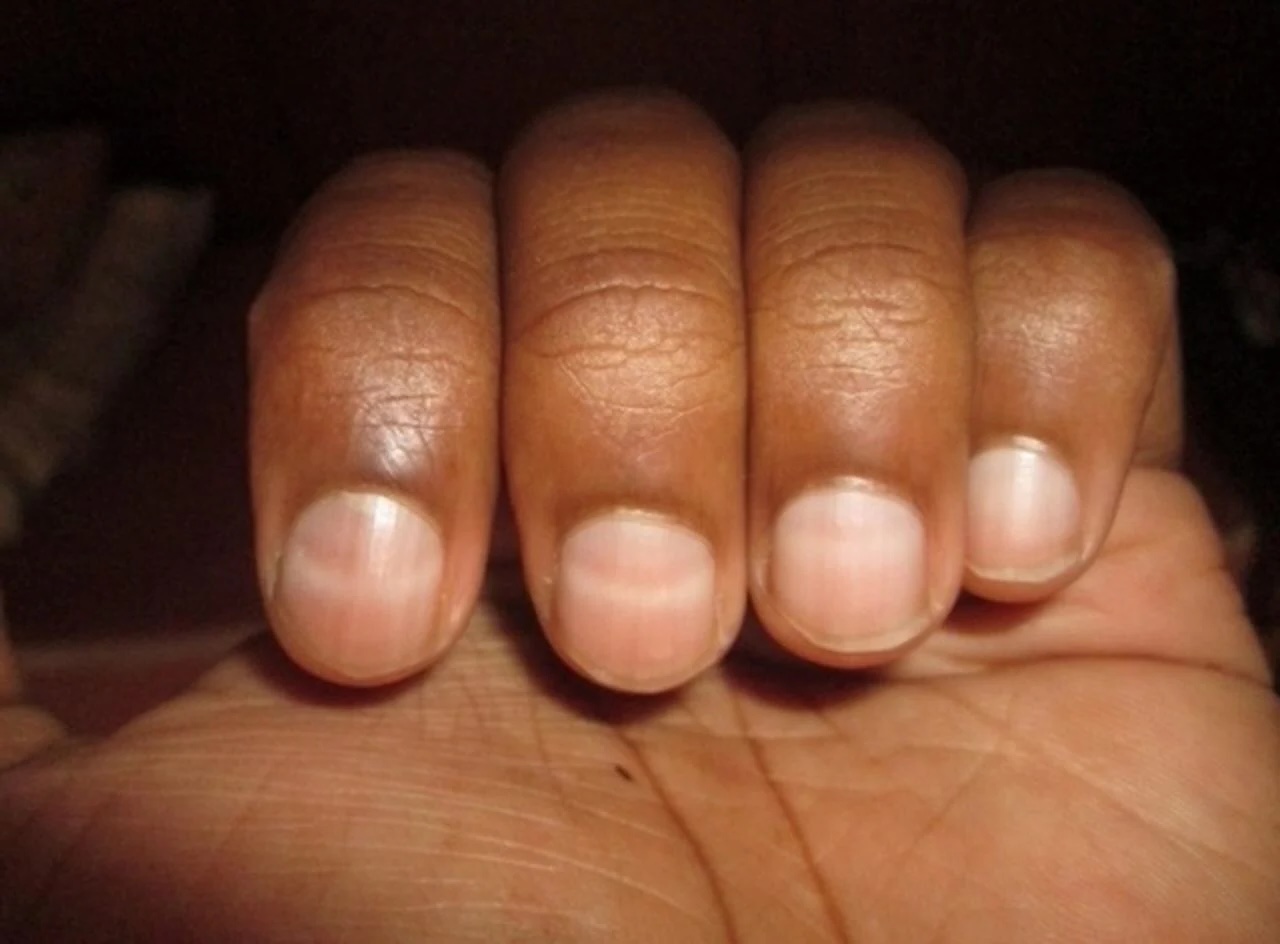
Beau's lines are those mysterious horizontal grooves that sometimes appear on your nails. Ever wondered what causes them? These lines can be a sign of various health issues or physical traumas. Beau's lines often indicate that something interrupted nail growth. This could be due to severe illness, malnutrition, or even a high fever. They can also result from direct injury to the nail matrix. Understanding these lines can help you keep an eye on your overall health. So, if you spot these grooves, it might be worth paying attention to your body’s signals. Let's dive into 50 facts about Beau's lines!
Key Takeaways:
- Beau's lines are horizontal grooves on nails that can indicate various health issues, from malnutrition to heart attacks. They can be prevented by maintaining overall health and nail care.
- Beau's lines can be caused by severe stress, chemotherapy, and systemic illnesses like diabetes. Understanding their causes and symptoms can help in early detection and treatment.
What Are Beau's Lines?
Beau's lines are horizontal grooves or indentations that appear on the nails. They can be a sign of various health issues, ranging from minor to severe. Let's dive into some fascinating facts about Beau's lines.
- Named after French physician Joseph Honoré Simon Beau, who first described them in 1846.
- These lines can appear on both fingernails and toenails.
- They form when nail growth is temporarily interrupted.
- Commonly associated with systemic illnesses like diabetes and zinc deficiency.
- Severe infections can also cause Beau's lines.
- Chemotherapy patients often develop these lines.
- Trauma to the nail matrix can result in Beau's lines.
- They can indicate malnutrition or severe vitamin deficiency.
- High fever from illnesses like pneumonia can cause these lines.
- Heart attack survivors sometimes develop Beau's lines.
Causes and Symptoms
Understanding the causes and symptoms of Beau's lines can help in early detection and treatment. Here are some key points to consider.
- Severe stress can lead to the development of these lines.
- They can be a sign of peripheral vascular disease.
- Hypothyroidism is another potential cause.
- Psoriasis patients may notice Beau's lines on their nails.
- Kawasaki disease in children can result in these lines.
- They can appear after a period of chemotherapy.
- Certain medications, like beta-blockers, can cause Beau's lines.
- They may indicate a history of severe illness or surgery.
- Beau's lines can be a sign of chronic kidney disease.
- They often appear after a period of severe malnutrition.
Diagnosis and Treatment
Diagnosing and treating Beau's lines involves understanding the underlying cause. Here are some important facts about diagnosis and treatment.
- A doctor will examine the nails and ask about medical history.
- Blood tests may be required to identify underlying conditions.
- Treating the underlying cause often makes the lines disappear.
- Nutritional supplements can help if the cause is a deficiency.
- Managing stress can prevent future occurrences.
- Regular monitoring of chronic conditions can help.
- Moisturizing the nails can improve their appearance.
- Avoiding nail trauma can prevent new lines from forming.
- In some cases, Beau's lines may require no treatment.
- Consulting a dermatologist can provide specialized care.
Prevention and Care
Preventing Beau's lines involves maintaining overall health and nail care. Here are some tips to keep your nails healthy.
- Eating a balanced diet rich in vitamins and minerals.
- Staying hydrated to promote healthy nail growth.
- Regular exercise to improve circulation.
- Avoiding harsh chemicals that can damage nails.
- Wearing gloves during activities that may harm nails.
- Keeping nails trimmed and clean.
- Avoiding biting or picking at nails.
- Using nail hardeners sparingly.
- Taking breaks from nail polish to let nails breathe.
- Regularly moisturizing nails and cuticles.
Interesting Tidbits
Here are some lesser-known facts about Beau's lines that might surprise you.
- They can appear on just one nail or multiple nails.
- The depth of the lines can indicate the severity of the condition.
- Beau's lines can take weeks to months to grow out.
- They can be mistaken for other nail conditions.
- Horizontal lines are different from vertical ridges, which are usually harmless.
- Beau's lines can sometimes be a sign of systemic lupus erythematosus.
- They can appear after a period of intense physical activity.
- Some people may never develop Beau's lines despite severe illness.
- They can be a sign of Raynaud's disease.
- Beau's lines are more common in older adults due to slower nail growth.
Final Thoughts on Beau's Lines
Beau's lines are more than just ridges on your nails. They can signal underlying health issues. From nutrient deficiencies to chronic illnesses, these lines offer clues about your body's well-being. Paying attention to them might help catch problems early. If you notice these lines, consider seeing a healthcare professional. They can help identify the cause and suggest treatment options. Remember, your nails can reflect your overall health. So, keep an eye on them. Taking care of your nails isn't just about appearance; it's about staying healthy. Simple steps like eating a balanced diet, staying hydrated, and practicing good hygiene can make a big difference. Your nails are like a window to your health. Treat them well, and they'll help you stay on top of your game.
Frequently Asked Questions
Was this page helpful?
Our commitment to delivering trustworthy and engaging content is at the heart of what we do. Each fact on our site is contributed by real users like you, bringing a wealth of diverse insights and information. To ensure the highest standards of accuracy and reliability, our dedicated editors meticulously review each submission. This process guarantees that the facts we share are not only fascinating but also credible. Trust in our commitment to quality and authenticity as you explore and learn with us.
